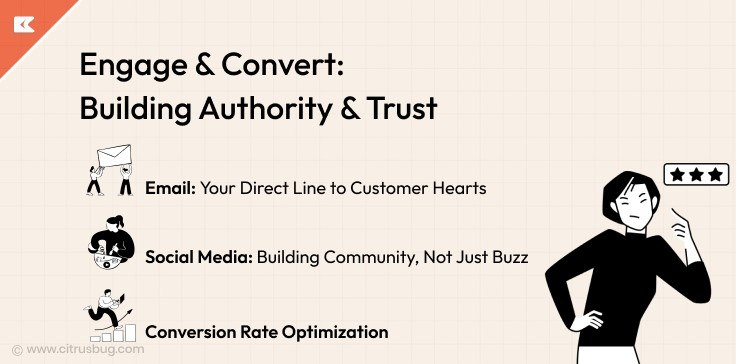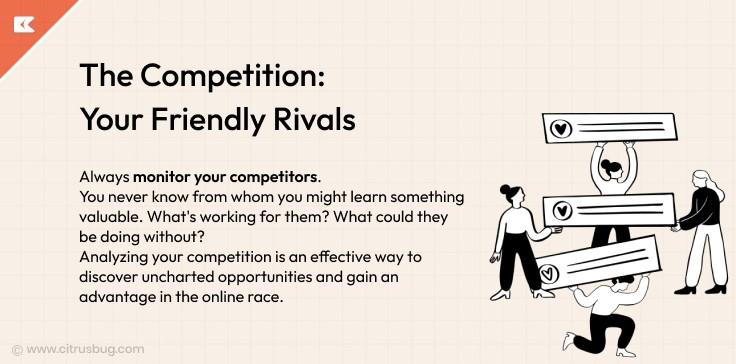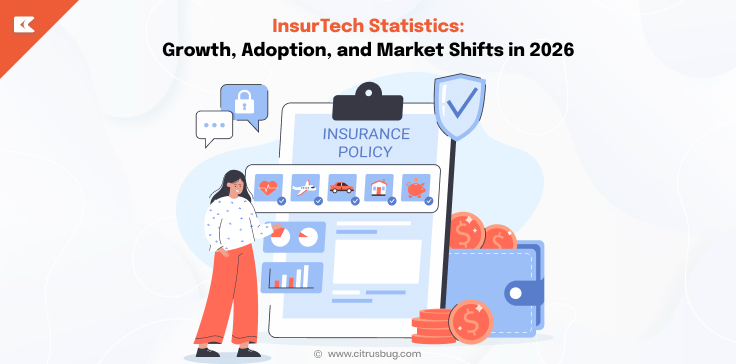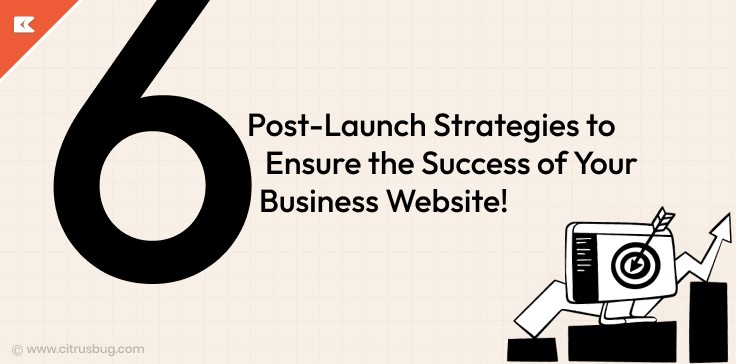
Congratulations on launching your website! Well, it is a great step to improve your business’s online visibility. But the real work begins now.
It is a digital storefront and powerful marketing platform. You will get the best results if you apply strategic approaches. They should be beyond design and focus on functionality, engagement, and results.
In short, it requires ongoing optimization, engaging content, and targeted promotion to attract and retain visitors. That’s where post-launch strategies come into play.
They’re your map to show you the right direction, making your website attract customers, boost sales, and build the loyalty of your brand.
If you are interested in learning about these strategies, we are here to help you. This guide is for you. Let’s learn more about them.
1) Examine and Enhance
Now, the work really starts as you turn your efforts from building to optimizing. Let’s perform some realistic practices to examine the efficiency of your website. It will help us to enhance the overall impact.
Data Don’t Lie
Think of your business website as a crowded shopping mall where you have a store. You open the store and hope people will come inside and buy, do you? If yes, then you probably want to know your customers, where they shop in your store, and everything.
We call it measuring and tracking the key activities of your customers. This is where you need analytics software that works like a security camera that you can use to go behind the scenes.
Are your website visitors fleeing your home page as if it were on fire? Or are they settling in and exploring several pages? Analytics will tell you a lot about the customers who visit your websites..
More importantly, analytics will uncover clues about your visitors’ likes and dislikes. Are customers filling their shopping carts but not checking out? Are they stalled on a particular page? There is a story hidden in all of these numbers, and you need to decode it to make your website more user friendly and conversion conducive.
To get started with analytics, you can use popular and free tools like Google Analytics (GA) and Google Search Console (GSC). These platforms offer detailed insights into your website’s performance and user behavior. For help with setting up these tools, you can refer to comprehensive guides on configuring Google Analytics and Google Search Console.
Technology Helps You Interpret the Data
Not every business owner understands the language of numbers. If you are also the one, numbers will not tell you the whole story. You will get a clear picture of your website’s performance if you see the data in visual form.
Modern technology shows you the exact portions of your page that grab and hold your visitors’ attention. Concurrently, user recordings give you the opportunity to observe actual visitor sessions as they navigate your site. This visual feedback provides key insights into clicks, movement, and scrolling behavior.
So, you can use these tools to get the insight you need. For example, tools like Hotjar provide visual representations of visitor activity, showing you where users click and how far they scroll. Additionally, a keyword tracker such as Serpple, Ahrefs, or SEMrush helps you monitor how your pages are ranking for targeted keywords, letting you assess which content is performing well and where improvements are needed.
A/B Testing to Make it Better
We believe the above content provides you with a better understanding of your audience. Now, let’s test out some ideas to get better ones. A/B testing is like a science experiment for your website. It helps you compare two versions of a webpage or element to see which one works best.
Let’s say you want to test out which headline works best. You’d create two versions of the same page, each with a different headline. The remaining text, graphics, and color scheme would all be identical throughout the pages. The results will help you determine which website headlines does a better job of drawing readers in and capturing their interest.
This method removes all uncertainty from optimizing your landing pages. This method removes all uncertainty from optimizing your landing pages. Tools like Optimizely or Google Optimize can help you perform A/B testing effectively. Focus on testing key areas of your website, such as headlines, call-to-action buttons, images, and layout. Using the data from these tests, you can make smart decisions that boost engagement and e-commerce CRO rates.
2) Content is Still King
Your website is much more than just an online brochure. It is a tool for enlightening and involving your audience while also narrating the tale of your brand. Here are some content strategies to consider:
Use Original High-quality Content: High-quality content keeps your visitors returning for more. It lets your audience know that you are active and relevant in the market. Over time, this helps in creating trust and positions your organization as an authority and source of valuable information in your industry. Also, avoid duplicate content on your pages.
The SEO Powerhouse: Informative content isn’t just about educating your audience; it’s a magnet for free traffic from search engines. When you write helpful content that answers your customers’ questions, search engines notice. They’ll direct more people who are interested in your business. Furthermore, it attracts potential customers who are actively searching for the services that you provide. It seamlessly improves your site’s search engine rankings. This is why, conducting a website content audit is a must to identify areas for improvement in the informative content, ensuring it continues to attract free traffic from search engines.
- Easy-to-read: Detailed and highly readable content has a better chance of ranking highly on search engines. It also helps engage visitors who arrive on your page looking for information.
- Depth of Content: Search engines judge the content of a page based on the density of the use of keywords in the body of the page.
- Distribution of Content: Content placed in the header or the top of the page is given the most importance by search engines in terms of keywords. On the other hand, content in the top left correlates best with the search engine results page.
- The Call to Action: Clearly define what you want your visitors to do once they read your content. Tell them how to take the desired action.
- Multilingual Content: If you’re targeting a multilingual market, your website should offer content in their native language and not only in English.
- Expand Your Audience: Make sure people see your excellent material! Distribute it widely using email newsletters, social media platforms, and even paid advertising efforts. An interactive HTML email builder allows marketers to create visually rich, responsive, and engaging email content without writing complex code. By doing this, you’ll promote your brand to a wider audience, which will increase traffic and the likelihood that those visitors will become loyal customers.
3) Link Building: Building Authority and Trust
So, you’ve created some great content that’s starting to bring traffic to your site. That’s only the first step in building your business’s authority and trust online.
The secret is in link building strategies that build your site’s reputation by linking your site with trusted sources, including local citation building, a key tactic that helps establish consistency and trust in your business’s NAP details across directories. It works like getting recommendations from experts and businesses with trusting audiences. Not only does it build your reputation, but search engines take notice, too. In fact, looking at current link building stats shows just how crucial quality backlinks are to gaining online visibility.
Let’s discuss the importance of backlinks, how to get them without buying or manipulating links, and some effective strategies specific to your business that will push your site to the top of search engines.
So, let’s get ready to level up your website’s credibility!
The Value of Backlinks
Search engines such as Google consider backlinks to be votes received from other sites. When trusted sites link to your great content, they work like telling search engines, “Hey, this site is informative and trusted!”
The more quality backlinks a site has, the higher it ranks in search engine results. Higher rankings mean more people see your pages and more visits to your site, increasing organic traffic to your site. Think of it like word-of-mouth for your business. So, focusing on the types of backlinks that matter can really help improve your site’s reputation and visibility.
Your Link Building Toolkit
So, what are some tried and true strategies for earning website street cred? Here are a few to start with:
- Guest Posting: Post educational articles on other sites within your industry and, in exchange, gain a precious backlink to your site.
- Resource Page Link Building: Lots of sites offer resources to their readers – links to tools, downloads, and sites their audience will find helpful.
- Skyscraper Technique:
- Identify popular content in your niche.
- Create something better.
- Reach out to the existing links pointing to the older content.
- Suggest they update their link to your new, excellent content.
- Digital PR and Outreach: Get your business mentioned in online publications, blogs, and news stories, earning high-quality backlinks and brand awareness from a trusted SaaS link-building agency.
- You can utilize all these practices according to the capabilities of your in-house team and if you are opting for link-building services, make sure the agency is focused on acquiring quality backlinks.
The Right Way to Build Links: Quality Over Quantity
Not all backlinks are created equal, and you should never use link schemes or manipulation tactics to acquire backlinks. Purchasing links is just as ineffective as linking within irrelevant content: it won’t build your reputation and can harm your site’s standing with search engines.
Instead, you should follow White hat link building practices for authentic and lasting results. This involves fostering relationships with site owners and influencers in your space. It helps you make a solid online presence and attract natural, high-quality contextual backlinks that grow website authority and trust.
4) Technical SEO: The Website’s Backbone
Your website is similar to a business. Sometimes, it presents well, but behind the scenes, it can be terribly mismanaged and operate with inefficient systems and processes. Technical SEO services helps you fix all these issues related to design, responsiveness, and many more. It serves as the foundation and framework for each landing page’s performance. An experienced SEO team ensures that all the elements of technical SEO are handled properly, and professional SEO services further boost the site’s visibility and enhance the overall user experience. Let’s learn about the essential elements of technical SEO:
Keywords: Help you RANK #1
Keywords are the single (or sometimes multiple) words people enter into search engines to solve their problems. By placing keywords throughout your content, you’re sending Google signals that say, “Hey, Google, this is what we do and exactly what our potential customers are searching for!” The more you optimize your pages with keywords, the higher you rise in search engine rankings (which means more organic traffic and leads/potential customers).
The Technical Audit: It’s not just a ‘tune-up’
We’re talking about optimizing your website’s code, content, and overall performance – it’s like giving your online business a tune-up. To achieve high speed and smooth performance, you need to use the best tech stack available.
Consider using a combination of technologies like:
- Frontend Frameworks: React, Angular, or Vue.js for fast and responsive user interfaces.
- Backend Frameworks: Node.js, Django, or Ruby on Rails for efficient server-side processing.
- Databases: MongoDB or PostgreSQL for quick data retrieval and management.
- Content Delivery Networks (CDNs): Cloudflare or Akamai to deliver content faster by distributing it across multiple servers worldwide.
- Caching Solutions: Redis or Memcached to store frequently accessed data in memory for quicker access.
Additionally, ensure that your website is optimized for performance by:
- Minimizing HTTP Requests: Reduce the number of elements on your page to speed up load times.
- Using Asynchronous Loading: Load JavaScript files asynchronously to prevent them from blocking the rendering of the page.
- Optimizing Images: Compress images to reduce their file size without compromising quality.
- Using Browser Caching: Store some elements of your site in users’ browsers so they don’t have to be downloaded every time.
To further improve your website’s performance, consider working with an external web development agency. These agencies have specialized skills and resources that can help you:
- Audit Your Website: Find performance issues and provide actionable insights.
- Implement Best Practices: Apply industry-standard optimization techniques and tools.
- Continuous Monitoring: Use advanced tools to keep an eye on your site’s performance and make necessary adjustments.
- Scalability Solutions: Ensure your website can handle increased traffic without compromising speed or performance by choosing web hosting for small business that offer scalable infrastructure.
By using the right tech stack and working with a skilled web agency, you can significantly improve your website’s speed and overall performance, providing a better experience for your users and driving higher engagement and conversions.
5) Engage and Convert: Turning Visitors into Customers
You’ve got a consistent flow of people visiting your site– great!
Now what? How do you transform curious visitors into devoted customers? That’s where engagement and conversion come in.
Let’s say you want to make an unforgettable first impression, then build on that relationship and gradually lead them toward a purchase. If yes, follow the given strategies.
Email: Your Direct Line to Customer Hearts
An email list works like a VIP guest list for your business.
It includes people who are interested in your products and services and willing to hear from you regularly. Plus, doing email list cleaning keeps your list healthy and ensures your messages reach the right people. So, it would be best if you fostered those connections with personalized emails, special offers, and informative content. These go straight to their inboxes and are an extremely effective means of generating sales and brand loyalty. However, make sure to practice ethical email marketing to avoid the spam folders and any deliverability issues.
Social Media: Building Community, Not Just Buzz
Of course, social media is an excellent tool for displaying your products or services. But more than that, it’s an ideal place to cultivate a sense of community around your brand. You can interact with your followers, address their comments, and inspire conversations that are not strictly promotional. Sharing eye-catching posters can also enhance your content and grab your audience’s attention. To optimize this engagement, consider using the best SMM panels along with social media analytics tools to gain insights into your audience’s preferences and behaviours.
Conversion Rate Optimization
A website should have a clear purpose for a purchase at its end. Conversion rate optimization focuses on creating a smooth path to that goal, eliminating any obstacles that might prevent visitors from taking action. We’re talking about apparent calls to action, a simple checkout process, compelling copywriting – you name it. If you’re wondering how to redesign a website to achieve these goals, optimizing your approach will help you get the most out of each visitor and convert them into lifelong customers.
6) Monitor, Adapt, and Evolve: Never Stop Improving
Creating a website is not a project in which you build it, and customers will come automatically. Your website needs to be able to evolve and change along with the internet. That’s why the ability to track, adjust, and continually improve your website is the greatest practice you should follow.
The Competition: Your Friendly Rivals
Always monitor your competitors. You never know from whom you might learn something valuable. What’s working for them? What could they be doing without? Analyzing your competition is an effective way to discover uncharted opportunities and gain an advantage in the online race.
Listen to Your Users: They Hold the Key
Your customers are the reason you’re in business. Their feedback is crucial for understanding their needs, problems, and preferences. Always seek their advice via surveys, polls or simple feedback forms. Use their input to make informed decisions and continually refine your website to serve your customers’ needs better.
Staying Fresh: The Digital Fountain of Youth
Much like in fashion, web design and technology are in a constant state of change. What’s trendy today is outdated tomorrow. You can also unpixelate images or replace low-quality visuals to ensure your site looks sharp and professional across all devices. Make sure you keep up with the latest trends and innovations in your industry and create pages that are relevant, engaging, and ahead of the curve.
Conclusion
We believe you’ve learned the keys to running a successful business online. By analyzing your data, crafting engaging content, building a solid foundation, and earning trust through backlinks, you’re well on your way to online success. Remember, building great websites takes time and effort. But with the right strategies, your site can truly shine and help your business grow. So get started today and watch your business grow!





 SaaS Development
SaaS Development Web Application Development
Web Application Development Mobile Application Development
Mobile Application Development Custom Software Development
Custom Software Development Cloud Development
Cloud Development DevOps Development
DevOps Development MVP Development
MVP Development Digital Product Development
Digital Product Development Hire Chatbot Developers
Hire Chatbot Developers Hire Python Developers
Hire Python Developers Hire Django Developers
Hire Django Developers Hire ReactJS Developers
Hire ReactJS Developers Hire AngularJS Developers
Hire AngularJS Developers Hire VueJS Developers
Hire VueJS Developers Hire Full Stack Developers
Hire Full Stack Developers Hire Back End Developers
Hire Back End Developers Hire Front End Developers
Hire Front End Developers AI Healthcare Software Development & Consulting
AI Healthcare Software Development & Consulting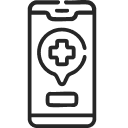 Healthcare App Development
Healthcare App Development EHR Software Development
EHR Software Development Healthcare AI Chatbot Development
Healthcare AI Chatbot Development Telemedicine App Development Company
Telemedicine App Development Company Medical Billing Software Development
Medical Billing Software Development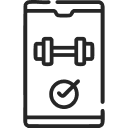 Fitness App Development
Fitness App Development RPM Software Development
RPM Software Development Medicine Delivery App Development
Medicine Delivery App Development Medical Device Software Development
Medical Device Software Development Patient Engagement Software Solutions
Patient Engagement Software Solutions Mental Health App Development
Mental Health App Development Healthcare IT Consulting
Healthcare IT Consulting Healthcare CRM Software Development
Healthcare CRM Software Development Healthcare IT Managed Services
Healthcare IT Managed Services Healthcare Software Testing services
Healthcare Software Testing services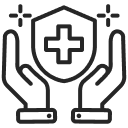 Medical Practice Management Software
Medical Practice Management Software Outsourcing Healthcare IT Services
Outsourcing Healthcare IT Services IoT Solutions for Healthcare
IoT Solutions for Healthcare Medical Image Analysis Software Development Services
Medical Image Analysis Software Development Services Lending Software Development Services
Lending Software Development Services Payment Gateway Software Development
Payment Gateway Software Development Accounting Software Development
Accounting Software Development AI-Driven Banking App Development
AI-Driven Banking App Development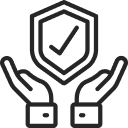 Insurance Software Development
Insurance Software Development Finance Software Development
Finance Software Development Loan Management Software Development
Loan Management Software Development Decentralized Finance Development Services
Decentralized Finance Development Services eWallet App Development
eWallet App Development Payment App Development
Payment App Development Money Transfer App Development
Money Transfer App Development Mortgage Software Development
Mortgage Software Development Insurance Fraud Detection Software Development
Insurance Fraud Detection Software Development Wealth Management Software Development
Wealth Management Software Development Cryptocurrency Exchange Platform Development
Cryptocurrency Exchange Platform Development Neobank App Development
Neobank App Development Stock Trading App Development
Stock Trading App Development AML software Development
AML software Development Web3 Wallet Development
Web3 Wallet Development Robo-Advisor App Development
Robo-Advisor App Development Supply Chain Management Software Development
Supply Chain Management Software Development Fleet Management Software Development
Fleet Management Software Development Warehouse Management Software Development
Warehouse Management Software Development LMS Development
LMS Development Education App Development
Education App Development Inventory Management Software Development
Inventory Management Software Development Property Management Software Development
Property Management Software Development Real Estate CRM Software Development
Real Estate CRM Software Development Real Estate Document Management Software
Real Estate Document Management Software Construction App Development
Construction App Development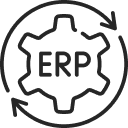 Construction ERP Software Development
Construction ERP Software Development






